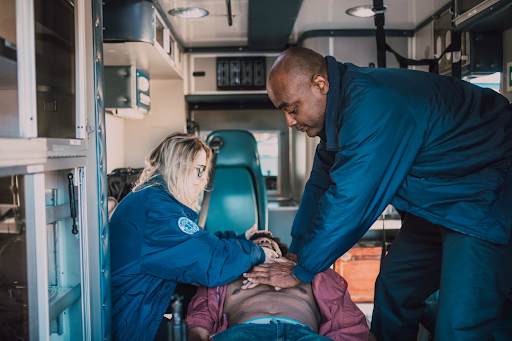Cardiopulmonary resuscitation (CPR) is a crucial skill that can save a life, as it increases the chances of survival after suffering a cardiac arrest. An individual’s heartbeat stops if they aren’t breathing, and immediate CPR may be required, especially in public areas where medical assistance may not be available. CPR is often administered before an individual receives medical attention, so the responsibility may one day fall to you. Knowing the essential steps of CPR to save a life is important.
Table of Contents
Check for Signs of Breathing for Steps of CPR
The first thing to do when someone becomes unconscious is to ensure the individual is breathing. Open the individual’s airway to check if they are breathing normally. It is essential to avoid beginning CPR if the individual is breathing normally.
Other signs of breathing include rising and falling of the chest. If you notice they are having difficulty breathing or not breathing, it is best to find help immediately. You can contact 911 or the appropriate emergency service in your area. As soon as you are sure to help is on the way, carry out the following steps:
Hand Position
Ensure the individual is lying on his back on a flat rigid surface. Try to get closer to the individual by kneeling next to them. Try to find the end of the breast bone using your fingers. Keep your arms straight, interlock your fingers, and place the heel of your first hand over the other hand to keep them stacked. Your fingers should be raised and away from the rib cage.
Perform Chest Compressions
You have to have the proper technique to ensure you are performing the chest compressions safely and efficiently. Keep your shoulders directly over the individual’s chest by leaning slightly forward. Apply force downwards by pressing the chest hard and fast. Utilize your body weight. Your hands should always be on the chest and only vary your weight when compressing.
Remember to keep pushing while maintaining a consistent tempo of about 100 to 120 compressions per minute. Maintaining a compression depth of about 5 cm to 6 cm for adults is also important. The compression depth should not exceed 5 cm for children.
Clear the Airway for Steps of CPR
It is helpful to ensure the individual’s airway is clear. Move closer to the individual and slightly tilt the head and lift the head. The mouth should be open to allow air to move freely. You can always seek hands-on training at certified facilities such as Newcastle Training to ensure you are always ready incase of emergencies.
Give Rescue Breaths
If the individual still has difficulty breathing after the cardiac arrest, you must give rescue breaths. Pinch the nose to keep the nostrils closed with one hand and use the other to support the chin. Take a breath and place your mouth over the individual. Blow into their airway until you can see the chest rising and falling and repeat.
Repeat the Chest Compressions and Rescue Breaths
To complete the cycle, you must repeat the chest compressions and rescue breaths. Continue performing the cycle until help arrives.
While reading about CPR training is helpful, it is essential to find hands-on training. You can also find videos that demonstrate the procedure. Learning how to perform CPR correctly can save someone’s life.
I am an Ambitious girl with a special interest in writing and sharing my knowledge. I love to hangout with nature and learn from it. My words will display the power of nature to the best as I love to write about the environment.





